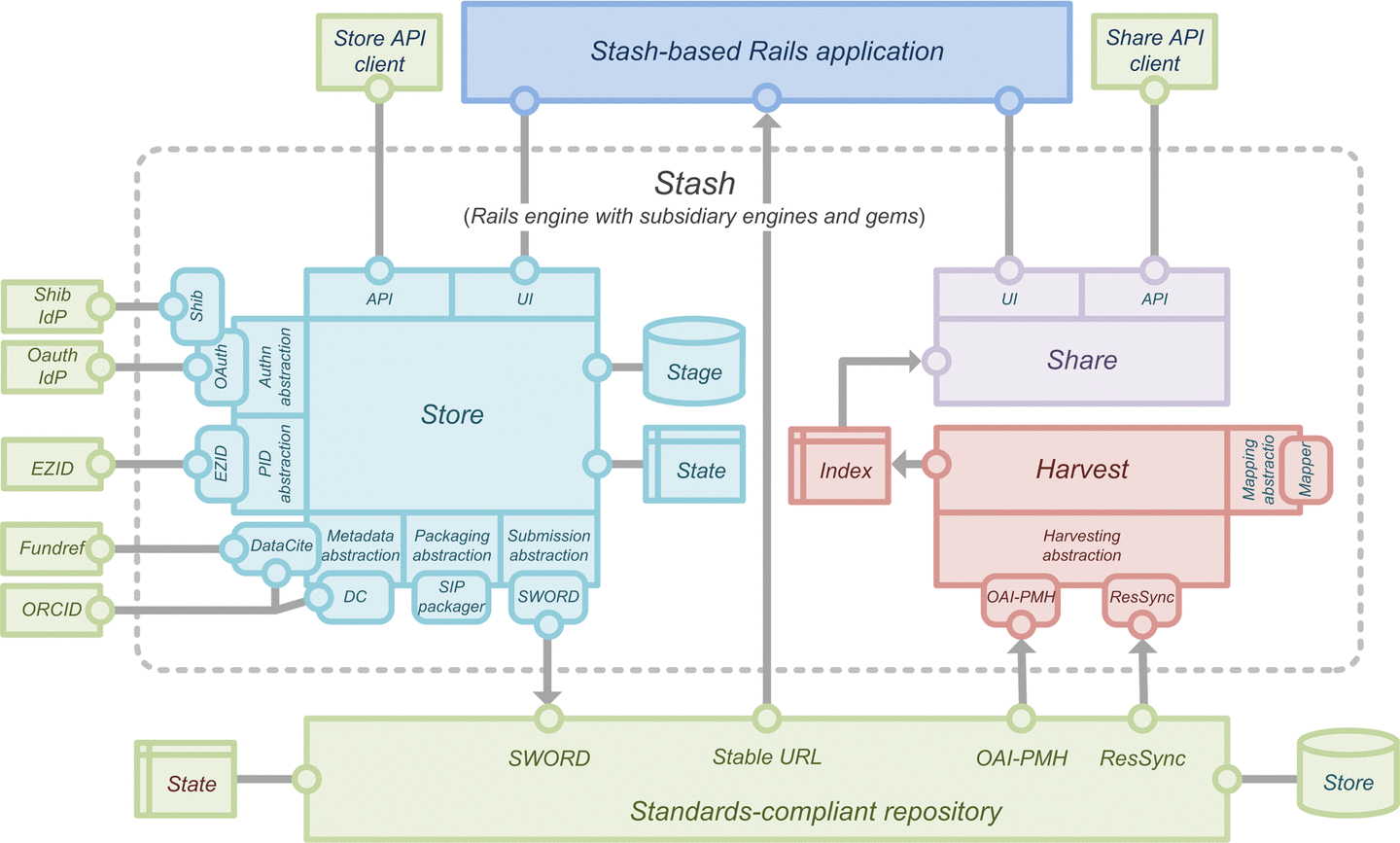Stash is an application framework for research data publication and preservation. Stash enables individual scholars to:
- Prepare datasets for curation by reviewing best practice guidance for the creation or acquisition of research data.
- Select data for curation through local file browse or drag-and-drop operation.
- Describe data in terms of scientifically-meaning metadata.
- Identify datasets for persistent citation, reference, and retrieval.
- Preserve, manage, and share data in an appropriate data repository.
- Discover, retrieve, and reuse data through faceted search and browse.
By alleviating many of the barriers that have historically precluded wider adoption of open data principles, Stash empowers individual scholars to assert active curation control over their research outputs; encourages more widespread data preservation, publication, sharing, and reuse; and promotes open scholarly inquiry and advancement.
Dash is the UC Curation Center's implementation of Stash. For the Dash source code, see the dashv2 repository.
Stash is intended to be applicable to any standards-compliant repository that supports the SWORD 2 protocol for deposit and OAI-PMH or ResourceSync protocols for metadata harvesting.
For individual projects, bundle exec rake will run unit tests, check test
coverage, and check code style. Use bundle exec rubocop -a to identify
code style problems and auto-fix any that can be auto-fixed. In general,
all projects follow the top-level rubocop.yml code style
configuration, with judicious exceptions.
Run travis-build.rb in the top-level stash directory
to bundle, test, and style-check all projects.
